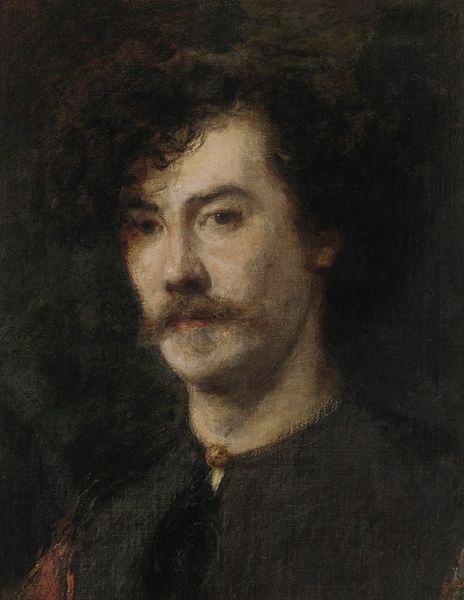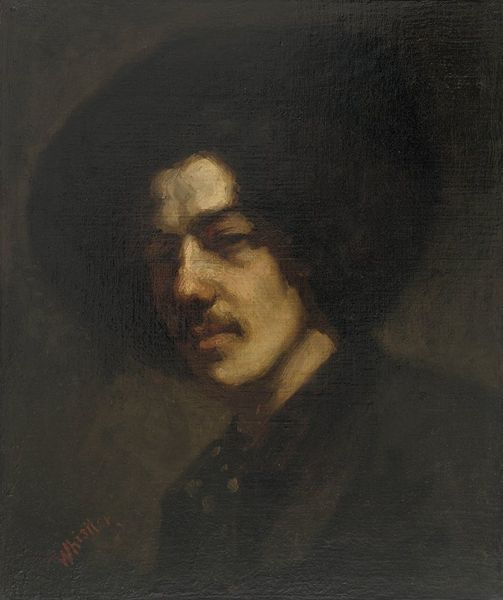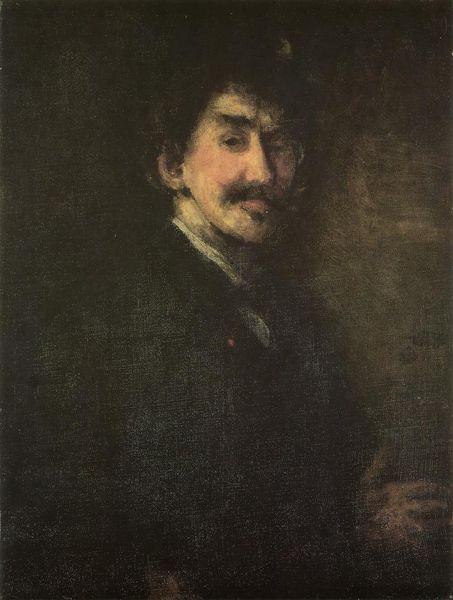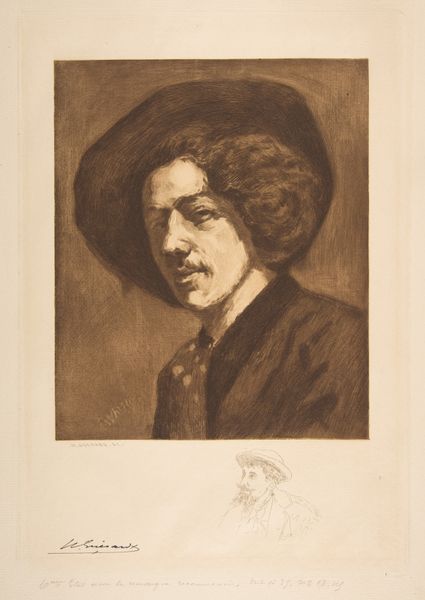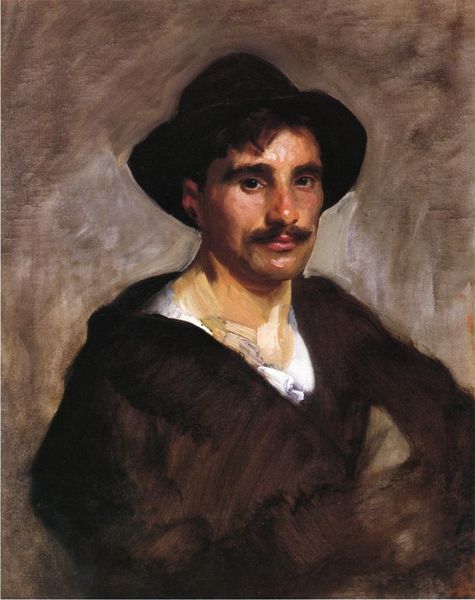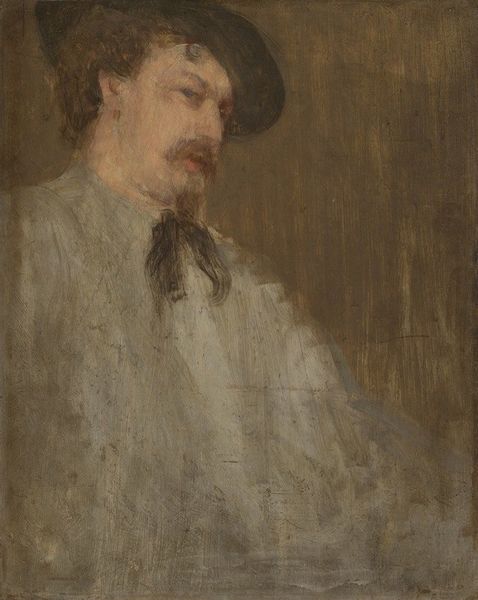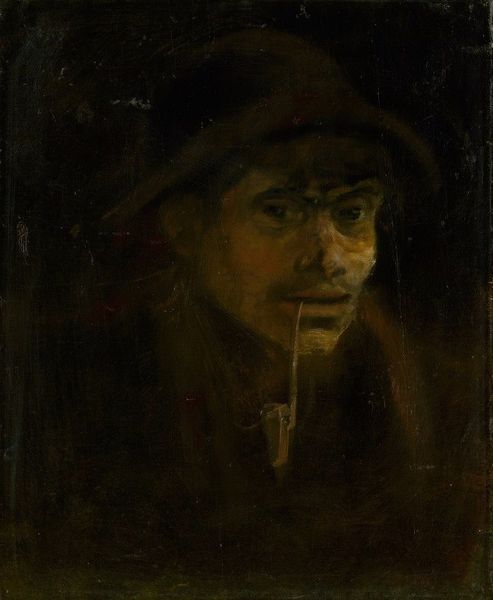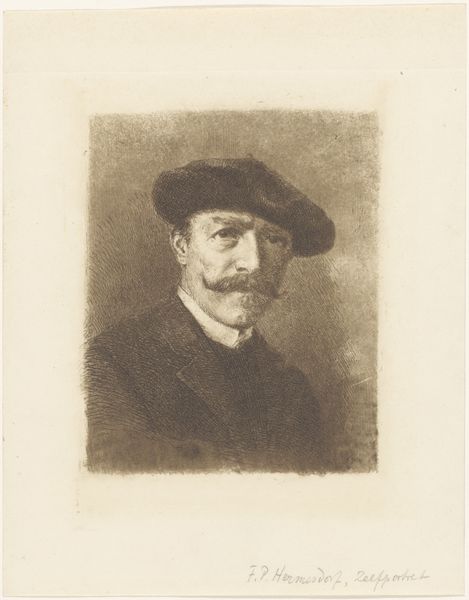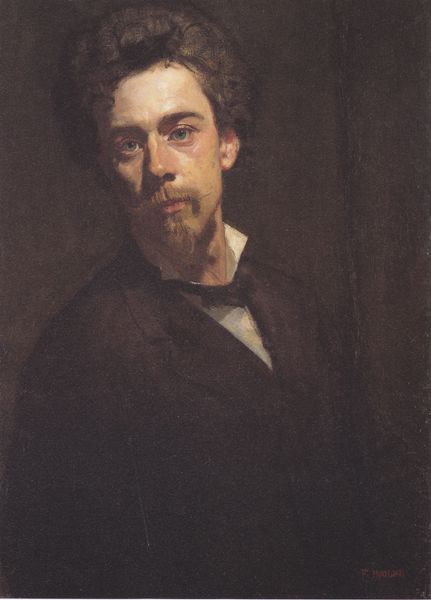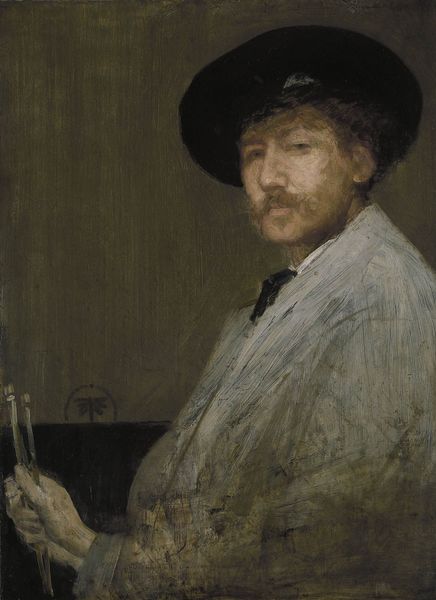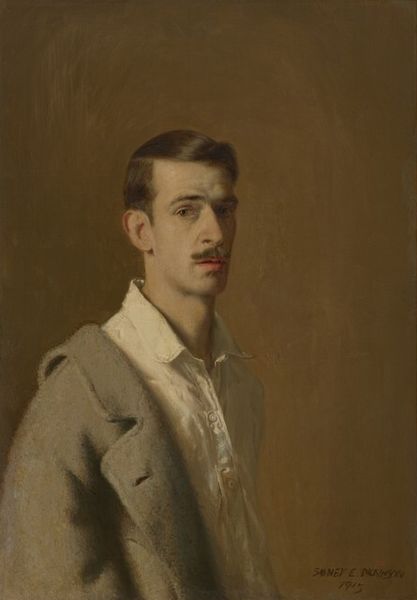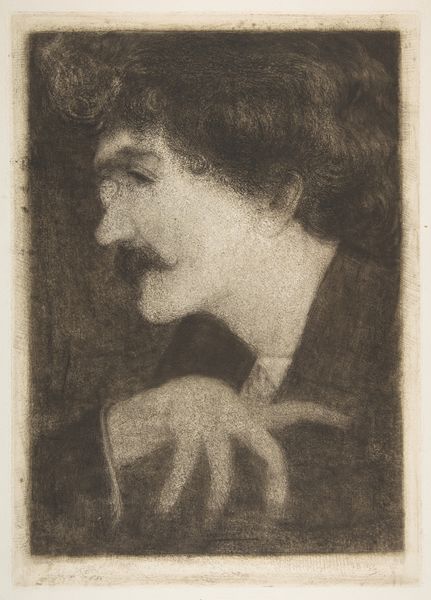
painting, oil-paint
#
portrait
#
figurative
#
self-portrait
#
painting
#
impressionism
#
oil-paint
#
realism
Copyright: Public Domain: Artvee
Curator: Looking at James Abbott McNeill Whistler's "Self-Portrait," completed between 1870 and 1875, what's your initial impression? Editor: Somber. There’s a weighty, almost melancholic feel. The subdued palette seems to deliberately mute the sitter, as if he’s emerging from a shadowy realm. Curator: Interesting. For me, it speaks volumes about Whistler's artistic ambition. It's oil paint, of course, but it seems like he’s purposefully exploring a limited material range. The blending and the feathery brushwork suggest he's examining the very process of seeing and translating that onto the canvas. Editor: Yes, and in that process of seeing, consider the positionality. As a white male artist in the late 19th century, Whistler was benefiting from structures of power. How does his depiction of self—especially that carefully cultivated air of detachment—intersect with or perhaps challenge these established roles? Curator: I'm drawn to the specific labor embedded in this artwork. We know Whistler was deeply concerned with craft. I see the smooth gradients of tone not as mere aesthetic choice but as the result of intense labor and considered methodology. This careful consideration elevates the artwork to something beyond a simple portrait. Editor: Indeed, but we cannot overlook the political implications embedded within. Self-representation becomes a charged act when positioned within social hierarchies. Was Whistler conscious of presenting a particular, possibly romanticized or elevated, version of himself, as he lived and worked in elite art circles in London? Curator: His aesthetic choices undeniably impacted the market. Whistler embraced Japonisme; consider the accessibility and consumption of Japanese prints and ceramics during the latter half of the nineteenth century. The availability and relatively cheap prices facilitated his stylistic adaptations, eventually increasing his own art value within the established artistic economy. Editor: Exactly! The painting speaks less to internal reality and more about crafting a marketable persona—a European artist incorporating eastern elements, subtly asserting a particular kind of cultural dominance. Curator: His exploration of the material capabilities, then, extended far beyond aesthetic interest and touched on labor relations and consumption patterns that fueled the artistic marketplace. It provides clues as to what sort of processes of painting are valued at certain moments. Editor: Well, considering both artistic production and societal positions provides a richer reading. Seeing an artist not only making something but negotiating the complicated world around him, changes the whole conversation.
Comments
No comments
Be the first to comment and join the conversation on the ultimate creative platform.
